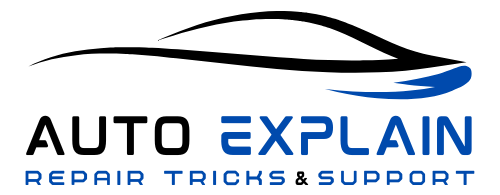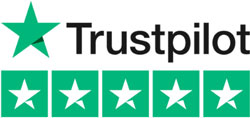
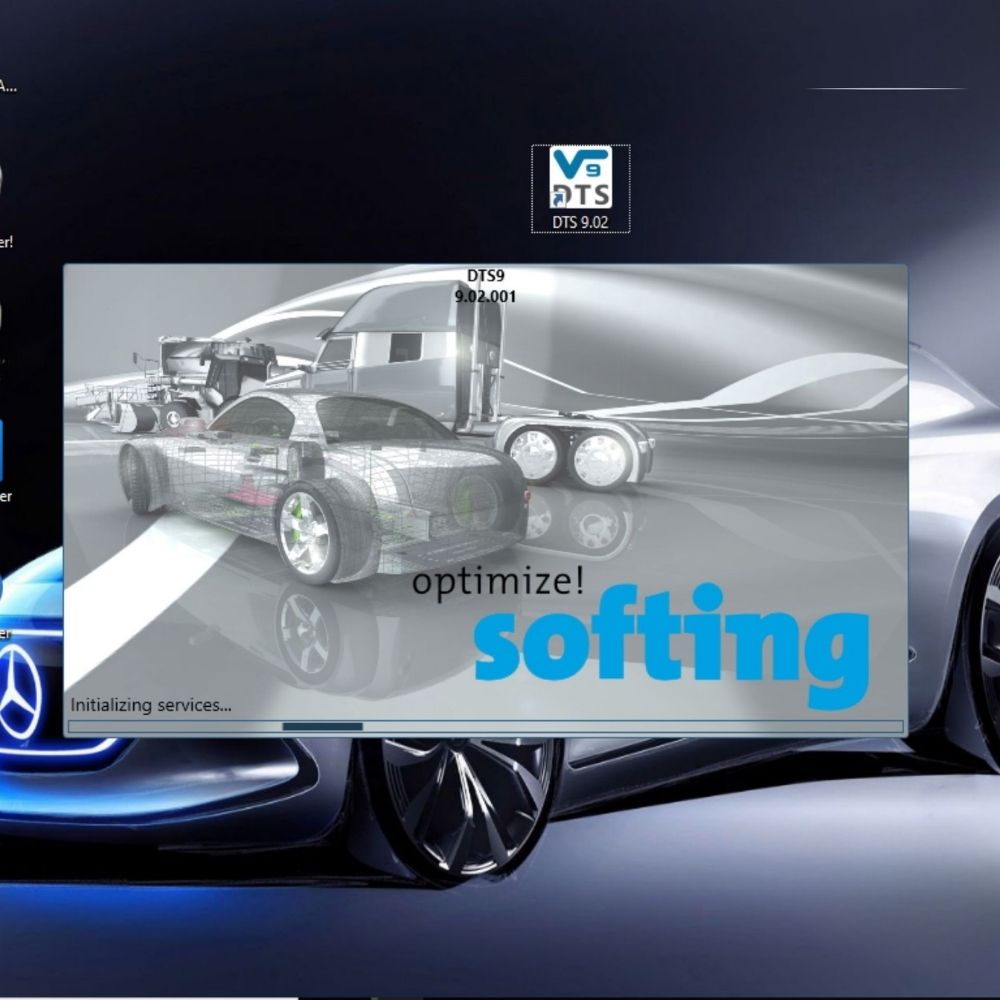
What is DTS Monaco? Key Functions of DTS Monaco Software
Contents
- What is DTS Monaco?
- Key Functions of DTS Monaco Software
- 1. ECU Programming and Flashing
- 2. Variant Coding and Parameter Adjustment
- 3. Diagnostic and Fault Management
- 4. Function and Actuator Testing
- 5. Control Unit Reset and Data Editing
- 6. Project-Based Workflow (CBF / SMR-D Files)
- 7. Certificate and License Integration
- Advantages of Using DTS Monaco
- 1. Engineering-Level Access
- 2. Comprehensive Coding and Programming
- 3. Flexible Project-Based Workflow
- 4. Support for a Wide Range of Vehicles
- 5. Actuator and System Testing
- 6. Enhanced Security with Certificate Integration
- 7. Continuous Updates and Support
- Frequently Asked Questions (FAQ) – DTS Monaco Software
DTS Monaco software is an advanced Mercedes-Benz engineering and diagnostic tool developed by Softing. It allows in-depth ECU communication, enabling technicians to perform variant coding, module testing, and engineering-level diagnostics beyond the capabilities of standard tools like Xentry.
As part of the official Daimler engineering suite, Mercedes DTS Monaco plays a vital role in ECU development, coding customization, and vehicle system simulation. Whether you’re an independent workshop or an automotive engineer, mastering DTS Monaco software is the first step to professional-level Mercedes diagnostics — and AutoExplain is here to guide you through that journey with practical insights and expert training resources.
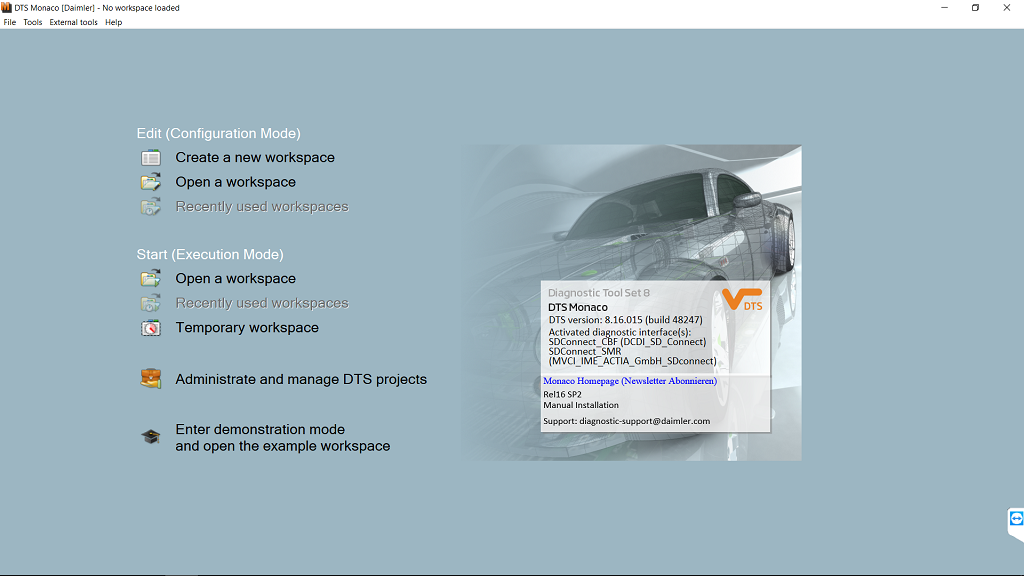
DTS Monaco Software version 8.16
What is DTS Monaco?
DTS Monaco is a specialized engineering and diagnostic software developed by Mercedes-Benz for in-depth ECU programming, variant coding, and data modification through OBD2 connection. Unlike standard service tools, DTS Monaco operates at the engineering level, allowing technicians to access, test, and modify control units (ECUs) using dedicated project files such as CBF or SMR-D.
Originally developed for Mercedes-Benz engineers, the software is now widely used in professional workshops for offline programming and module replacement tasks, including resetting, unlocking, or customizing ECU functions. With DTS Monaco, users can:
- Read and clear fault codes
- Modify or reset control unit parameters
- Unlock anti-theft radio systems (HU)
- Enable or disable hidden vehicle functions
- Perform coding and programming after ECU replacement
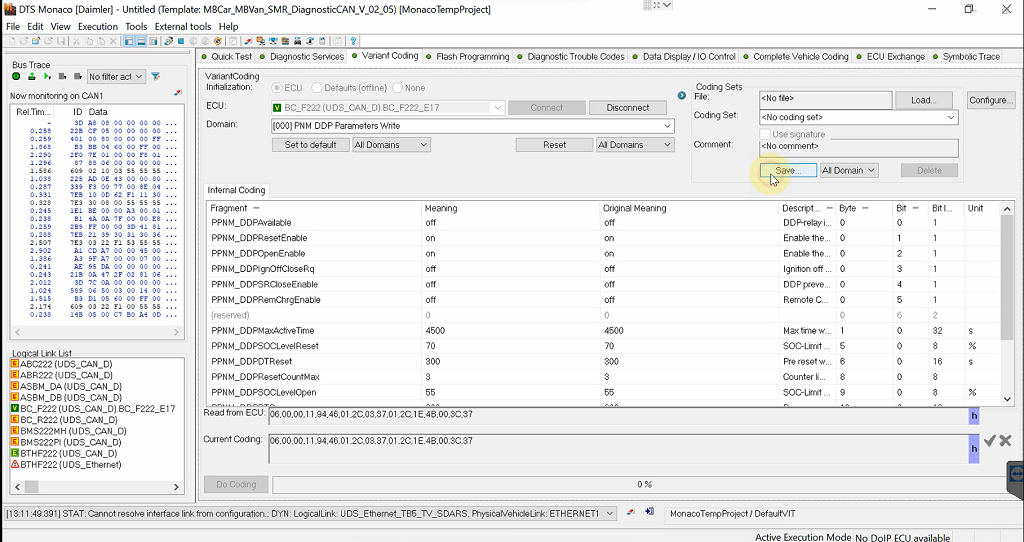
There are two main versions of the software:
- DTS Monaco 8.16.015 – Stable version supporting vehicles up to 2021, compatible with CBF and SMR projects, lifetime license, no certificate required.
- DTS Monaco 9.02 – Updated version supporting models up to 2023, uses only SMR projects, requires an active Xentry Certificate for new-generation vehicles.
DTS Monaco supports multiple diagnostic interfaces such as C4, C5, C6 (original or clone), Enet, VCX SE, Scanmatik SM2, and Openport, depending on the vehicle and connection type. The software is available in German and English and continues to receive version updates to support new models including A/B, C, E, S-Class, SUV, VAN, Maybach, and Smart.
At AutoExplain, DTS Monaco is introduced as one of the essential tools for mastering Mercedes-Benz ECU programming and coding — forming a foundation for technicians to confidently handle complex diagnostic and control unit operations.
AutoExplain proudly presents the book: “DTS Monaco Guidebook: Mercedes-Benz Diagnostic and Programming for Rookies (2025 Edition)”
This guidebook is designed to help beginner and intermediate technicians understand and master DTS Monaco software. Covering everything from basic ECU communication, project file usage (CBF/SMR-D), offline coding, variant coding, to actuator testing, it serves as a comprehensive reference for anyone starting their journey in Mercedes-Benz diagnostics and programming.
You can see detail this book at: DTS Monaco Manual

The 2025 edition also includes step-by-step instructions, practical examples, screenshots, and tips for working with real vehicles, making it easier to bridge the gap between theory and hands-on application. Whether you are an independent workshop technician or an automotive engineering student, this guidebook provides a solid foundation for mastering professional-level Mercedes coding and programming.
By combining clear explanations with practical guidance, the DTS Monaco User Manual book from AutoExplain ensures that even beginners can confidently handle advanced ECU functions, module replacement, and secure coding for newer Mercedes models.
Key Functions of DTS Monaco Software
DTS Monaco software provides a full range of engineering-level diagnostic and programming functions for Mercedes-Benz vehicles. It allows technicians to perform in-depth operations that go beyond standard diagnostic tools like Xentry or Vediamo.
Below are the main functions that make DTS Monaco an essential tool for professional ECU work:
1. ECU Programming and Flashing
DTS Monaco enables users to program or reflash ECUs after replacement or software updates. This process ensures that each module communicates correctly with the vehicle network and is configured with the latest firmware or calibration data.
2. Variant Coding and Parameter Adjustment
Technicians can modify coding values and hidden parameters to activate or deactivate vehicle features — such as lighting options, display settings, or comfort functions. This capability allows workshops to customize features or restore factory settings after control unit replacement.

3. Diagnostic and Fault Management
DTS Monaco allows reading and clearing of diagnostic trouble codes (DTCs), live data monitoring, and module communication tests. It’s often used to identify and correct complex system errors at the engineering level.
4. Function and Actuator Testing
Users can run manual test routines to check the performance of specific actuators, sensors, and system functions directly through the software.
This is especially useful for confirming proper operation after repairs or coding modifications.
5. Control Unit Reset and Data Editing
The software can reset control units, modify stored configuration data, and perform adaptation or calibration tasks when replacing components like ECM, TCM, or ESP modules.
6. Project-Based Workflow (CBF / SMR-D Files)
- DTS Monaco operates using project files (CBF or SMR-D), which define how each ECU communicates.
- CBF Projects: Used in DTS 8.16 (supports older and wider range of vehicles).
- SMR-D Projects: Used in DTS 9.02 (for newer models, requires valid certificate).
7. Certificate and License Integration
For Mercedes-Benz models from 2021 and newer (and certain 2020 vehicles), DTS Monaco software requires an active Xentry Certificate to perform coding, programming, or flashing operations.
This certificate acts as a security authorization, ensuring only verified users can access sensitive ECU functions on newer vehicles.
Advantages of Using DTS Monaco
DTS Monaco software offers numerous advantages that make it the preferred tool for professional Mercedes-Benz ECU programming and coding. Key benefits include:
1. Engineering-Level Access
Unlike standard diagnostic tools such as Xentry, DTS Monaco provides deep access to ECUs, allowing engineers and advanced technicians to communicate directly with all modules. This access enables advanced coding, testing, and calibration of vehicle systems.
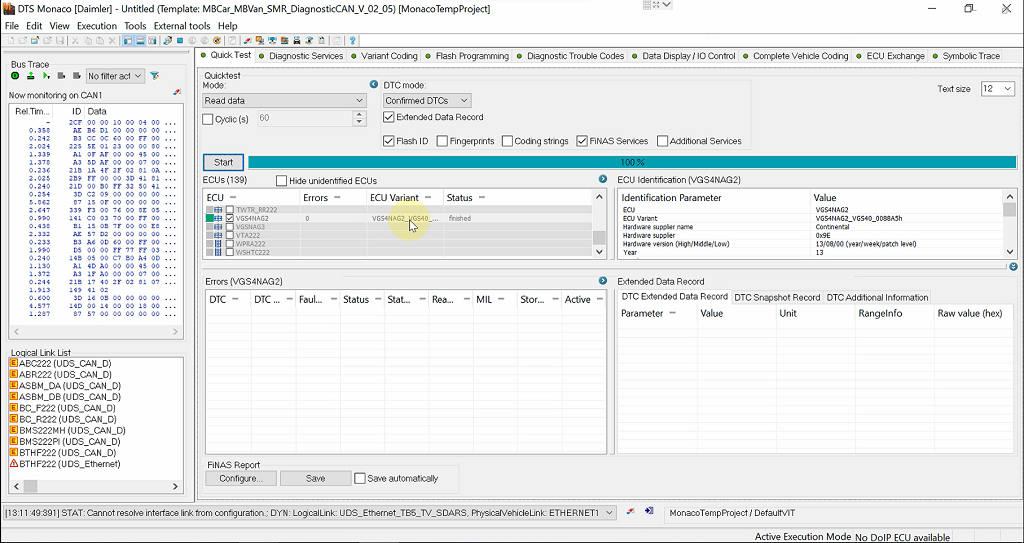
2. Comprehensive Coding and Programming
With DTS Monaco, users can read, modify, and write ECU data using CBF or SMR-D project files. This allows for complete control over vehicle functions, including feature activation, parameter adjustments, and adaptation of new control units.
3. Flexible Project-Based Workflow
The software supports project-based workflows, enabling structured testing, development, and configuration of ECUs. Technicians can load, edit, and execute projects to perform precise operations without impacting unrelated systems.
4. Support for a Wide Range of Vehicles
DTS Monaco is compatible with all major Mercedes-Benz models, including A/B, C, E, S-Class, SUVs, Vans, Maybach, and Smart vehicles. This ensures a single tool can handle multiple models and system generations.
5. Actuator and System Testing
Technicians can run manual or automated test routines to verify actuators, sensors, and system responses. This functionality is essential for troubleshooting, calibration, and validating newly programmed modules.
6. Enhanced Security with Certificate Integration
For vehicles from 2021 onward (and select 2020 models), DTS Monaco integrates with Certificates to ensure secure access to sensitive ECU functions, reducing the risk of errors or unauthorized changes.
7. Continuous Updates and Support
DTS Monaco continues to be updated to support new vehicle generations and control units, keeping technicians current with Mercedes-Benz’s latest engineering standards. Coupled with manuals, guides, and training resources, it remains a stable and reliable choice for professional workshops.
In summary, DTS Monaco combines engineering-level diagnostics, flexible coding, and secure ECU access in a single tool, making it indispensable for any workshop or technician specializing in Mercedes-Benz vehicles.
See more: How to use DTS Monaco
Frequently Asked Questions (FAQ) – DTS Monaco Software
1. What is a Project File in DTS Monaco?
A Project File (CBF or SMR-D) defines how a control unit communicates with DTS Monaco.
- CBF projects are used in DTS 8.16 and support a wider range of vehicles.
- SMR-D projects are used in DTS 9.02, typically for newer Mercedes models (2021+), requiring a certificate.
2. What does ECU stand for?
ECU means Electronic Control Unit, which is the brain of vehicle systems (engine, transmission, ABS, airbags, etc.).
DTS Monaco allows programming, coding, and testing of ECUs at the engineering level.
3. What is Variant Coding?
Variant Coding is the process of activating or deactivating specific vehicle functions (e.g., comfort features, lighting, speed limits). DTS Monaco enables engineers to modify hidden parameters safely via project files.
4. What is a CBF File?
A CBF (Control Block File) contains information about how an ECU communicates and what functions are accessible. CBF files are used in DTS Monaco for older models or broader ECU support.
5. What is an SMR-D File?
An SMR-D file is a project file format used in newer Mercedes models with stricter security. SMR-D requires a valid Xentry Certificate for operations like coding or flashing.
6. What is a Certificate in DTS Monaco?
A Certificate (DTS Monaco Certificate) is a security authorization required for coding and programming certain ECUs on 2021+ Mercedes models or select 2020 vehicles. Without it, some operations may fail or modules may remain locked.
7. What interfaces can DTS Monaco work with?
DTS Monaco supports a variety of diagnostic interfaces, such as:
- C4, C5, C6
- Enet, Openport
- VCX SE, VCX NANO (requires license)
- Scanmatik SM2
These interfaces allow communication with different ECU generations.
8. What is an Actuator Test?
An Actuator Test lets technicians manually control vehicle components (lights, motors, valves) to verify proper operation after coding or repair.
9. What is flashing in DTS Monaco?
Flashing is the process of updating or rewriting ECU software to fix issues, add features, or match new module configurations.
10. Is DTS Monaco coding done online or offline?
DTS Monaco allows offline coding and programming for supported vehicles, provided the project files are available and the correct certificate/licensing is active for newer models.
DTS Monaco is a powerful engineering and diagnostic software designed for Mercedes-Benz ECU programming, coding, and system testing. It provides engineers and advanced technicians with offline access to control units, enabling variant coding, ECU flashing, actuator testing, and parameter adjustments that go far beyond standard diagnostic tools like Xentry or Vediamo.
With support for both CBF and SMR-D project files, DTS Monaco ensures compatibility across a wide range of Mercedes models, from classic vehicles to the newest 2021+ models. While newer vehicles require an active Xentry Certificate for secure ECU access, the coding and programming processes themselves remain offline, offering flexibility and efficiency for workshops.
In summary, DTS Monaco software is an indispensable tool for professional Mercedes-Benz diagnostics, combining engineering-level access, project-based workflows, and secure programming in a single solution. Mastering DTS Monaco lays the foundation for expert-level ECU development, coding, and vehicle system customization, making it a must-have for anyone working seriously with Mercedes vehicles. If you need further assistance with any issues, please contact AutoExplain via WhatsApp: +1(936)2896695 and our team of technicians will assist you!
Master advanced Mercedes vehicle diagnostics and programming with our all-in-one guidebook combo.
You may be interested in: DTS Monaco download


What is the Xentry Certificate Zenzefi? Why You Need It, and When It Is Required?

Master VAG Coding vs VAG Expertise: Which Training Book Is Better?
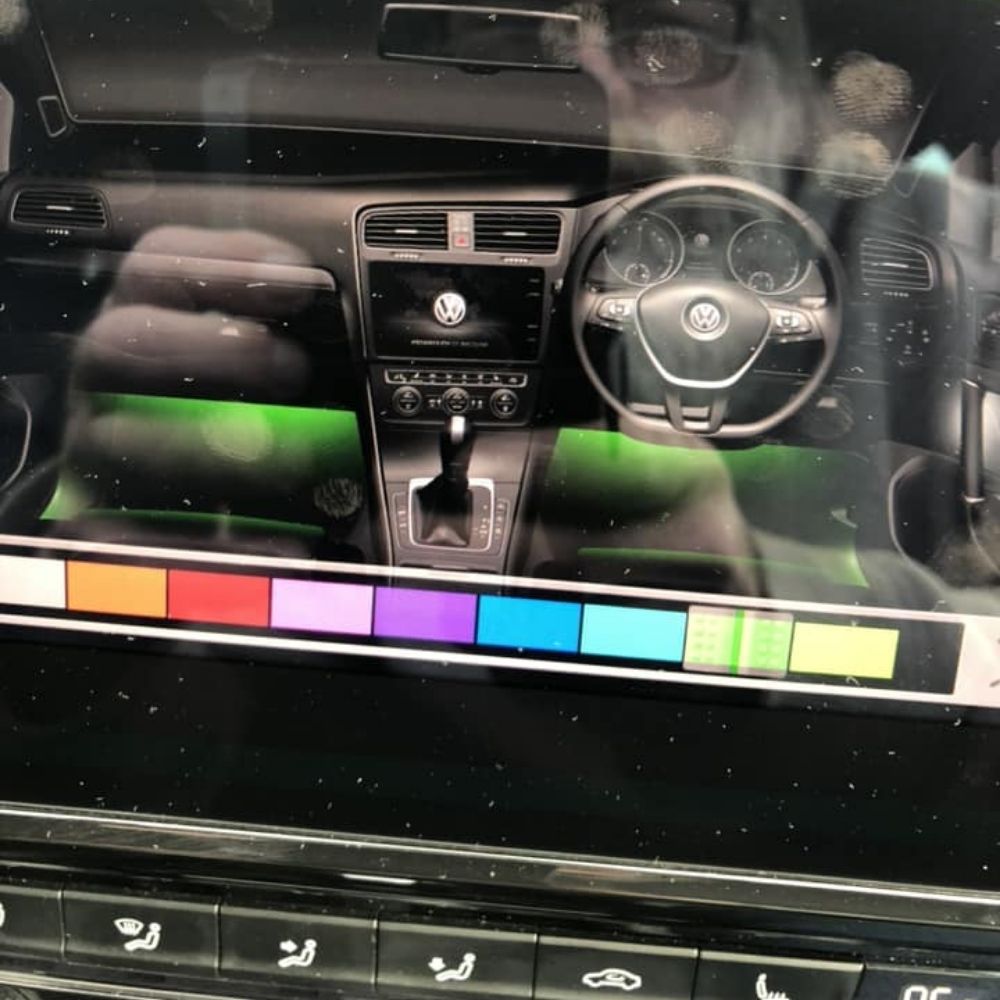
How to Coding Ambient Light for VW Golf R 2018 by OBDeleven


New Mercedes Car Coding Solution with ZenZefi certificate for DTS Monaco 9.02





